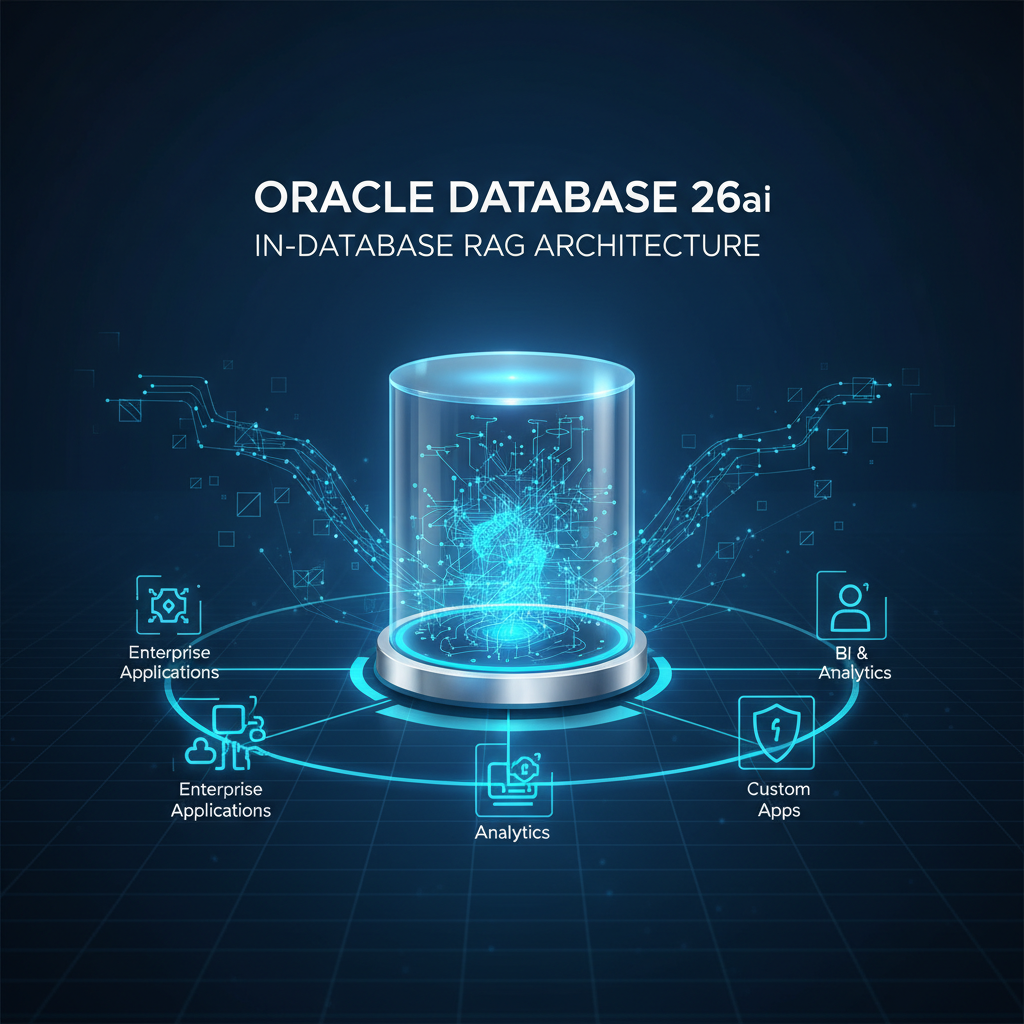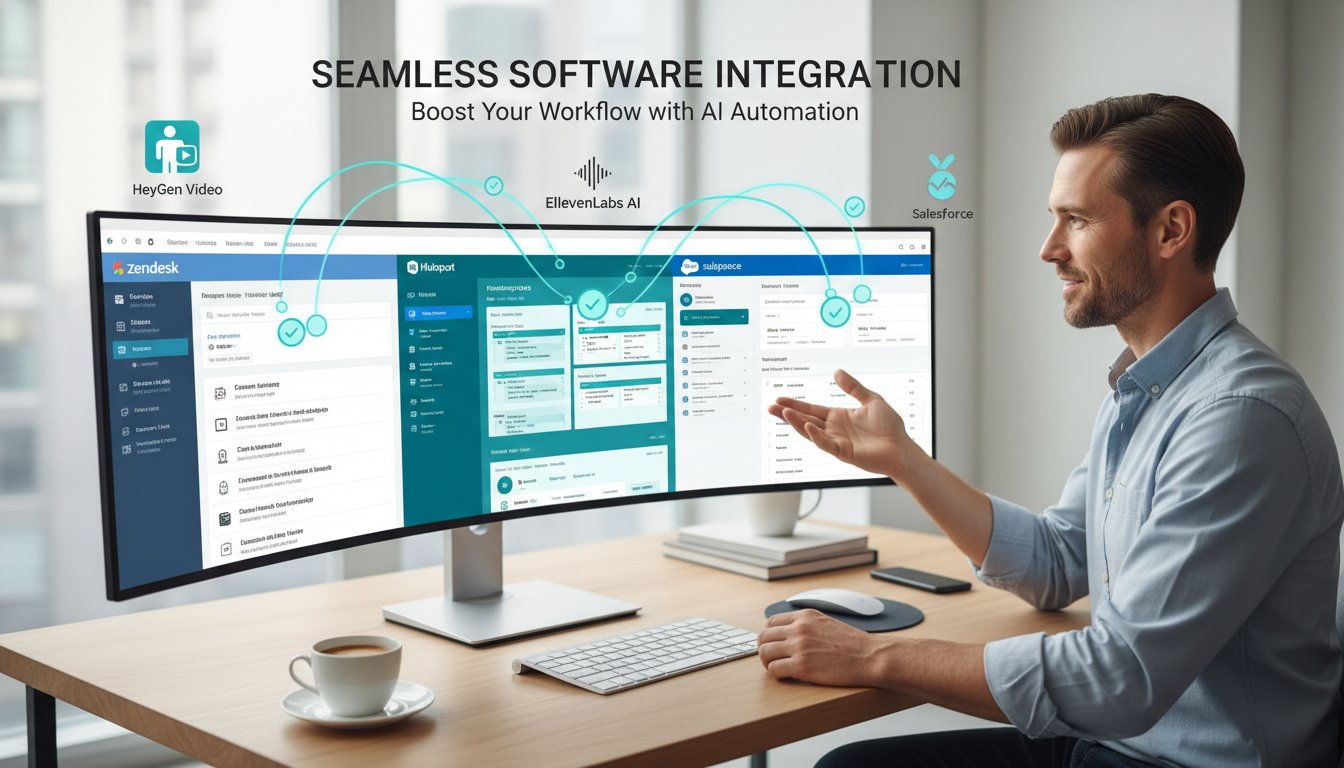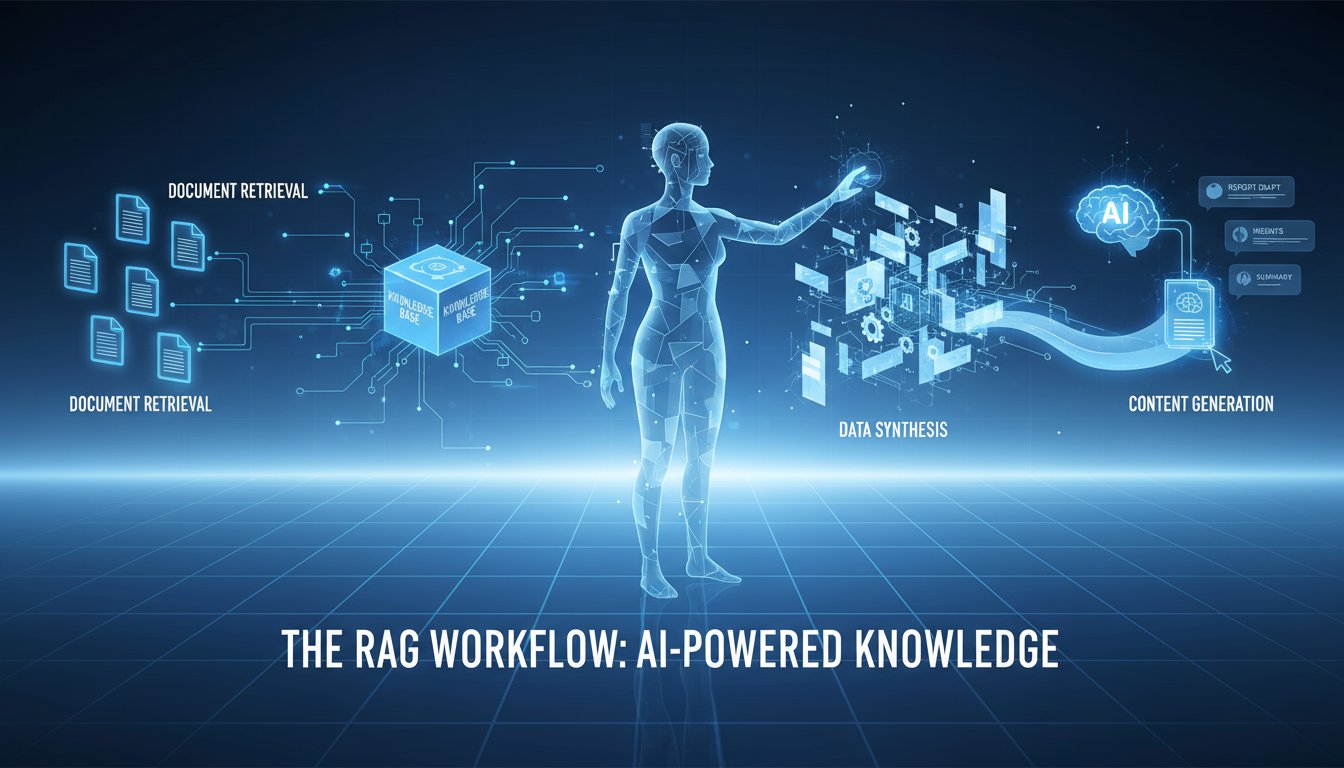When Oracle announced Database 26ai in October 2024, most enterprise architects focused on the flashy AI features. They missed the real story: Oracle just solved the three biggest problems killing enterprise RAG implementations—data movement, security vulnerabilities, and vector performance bottlenecks.
After analyzing the technical specifications and enterprise deployment patterns, the implications are staggering. Oracle isn’t just releasing another AI-enabled database. They’re fundamentally rewriting how enterprise RAG systems should be architected, moving from the current “data-out-of-database” model to an “AI-in-database” paradigm that could eliminate 70% of traditional RAG infrastructure complexity.
This isn’t theoretical. Early adopters like Retraced are already seeing dramatic operational improvements, and the technical architecture suggests this could become the new standard for enterprise RAG deployments. Here’s why every enterprise AI team needs to understand what Oracle just unleashed.
The Enterprise RAG Problem Oracle Actually Solved
Most enterprise RAG implementations fail because of three fundamental architectural problems that have plagued the technology since its inception. Oracle Database 26ai doesn’t just address these issues—it eliminates them entirely through a radically different approach.
The Data Movement Security Nightmare
Traditional enterprise RAG systems require moving sensitive data from secure enterprise databases to external vector stores. This creates multiple security vulnerabilities: data in transit, data at rest in multiple systems, and complex permission management across platforms.
Oracle 26ai solves this by embedding vector operations directly into the database engine. Your enterprise data never leaves the secure database environment. Vector embeddings are stored as native data types alongside your existing relational data, with the same enterprise-grade security controls, encryption, and access policies.
The technical implementation uses native SQL distance functions for similarity search, eliminating the need for external vector databases entirely. This means your RAG queries run with the same security profile as your standard SQL queries—a massive improvement for compliance and governance.
Performance Bottlenecks from Cross-System Queries
Current RAG architectures require complex orchestration between vector databases, traditional databases, and LLM services. Each query involves multiple network hops, data format conversions, and system handoffs that create latency and failure points.
Oracle’s Unified Hybrid Vector Search changes this completely. It combines AI Vector Search with relational, text, JSON, knowledge graph, and spatial searches in a single query execution. Instead of coordinating between systems, your RAG pipeline runs as optimized SQL operations within a single database engine.
The performance implications are significant. Oracle Exadata optimizations offload vector queries to intelligent storage with RDMA algorithms for ultra-low latency. Early benchmarks suggest query performance improvements of 5-10x compared to traditional multi-system RAG architectures.
Vector Index Scalability and Management
Enterprise RAG systems struggle with vector index management at scale. Traditional vector databases require manual tuning, complex sharding strategies, and specialized operational expertise that most enterprises lack.
Oracle 26ai includes three optimized vector index types built into the database engine: Hierarchical Navigable Small World (HNSW), Inverted File Flat (IVF-Flat), and Hybrid indexes. These are automatically managed by Oracle’s autonomous database features, including automatic scaling, optimization, and maintenance.
More importantly, vector indexes integrate with Oracle’s existing database optimization features like SQL Plan Management and automatic transaction rollback. Your vector operations benefit from decades of enterprise database optimization without additional complexity.
The Technical Architecture That Changes Everything
Oracle Database 26ai’s technical architecture represents a fundamental shift in how enterprise AI systems should be designed. Instead of bolting AI capabilities onto existing database systems, Oracle rebuilt core database functions to be AI-native from the ground up.
Native Vector Data Types and Operations
The database engine now treats vectors as first-class data types, similar to integers or strings. You can store text, image, audio, and video embeddings directly in database columns with full SQL support for distance calculations, similarity searches, and hybrid queries.
This seemingly simple change has profound implications. Your RAG embeddings live in the same transactional environment as your business data, with ACID guarantees, backup and recovery, and all the enterprise features you expect from mission-critical systems.
The SQL integration means your development teams can build RAG applications using familiar database skills instead of learning specialized vector database APIs. A typical RAG query becomes a standard SQL statement with vector distance functions.
Model Context Protocol (MCP) Server Integration
Oracle 26ai includes native support for the Model Context Protocol, allowing AI agents to access and reason over organizational data iteratively. This enables sophisticated agentic workflows that can request additional context, refine queries, and build complex reasoning chains—all within the secure database environment.
The MCP integration means your AI agents can perform multi-step reasoning over your enterprise data without exposing sensitive information to external systems. Agents can start with a broad query, analyze results, and then request more specific data to refine their responses.
This capability transforms simple RAG retrieval into intelligent, context-aware research workflows that can handle complex enterprise questions requiring multiple data sources and reasoning steps.
NVIDIA Ecosystem Integration for GPU Acceleration
Oracle has designed 26ai with deep NVIDIA integration, supporting NVIDIA NeMo Retriever microservices for vector embedding and RAG pipelines. Future releases will include GPU-accelerated vector search using CAGRA (CUDA ANN GRAph) and the NVIDIA cuVS library.
This integration means you can leverage NVIDIA’s AI acceleration stack while maintaining Oracle’s enterprise database features. Your vector operations can scale from CPU-based similarity search to GPU-accelerated massive parallel processing as your RAG requirements grow.
The architecture also supports running embedding models, open-weight LLMs, and named entity recognition models directly within your tenancy through Oracle’s private AI services container, ensuring complete data sovereignty.
Enterprise Features That Actually Matter for RAG at Scale
Enterprise RAG deployments have requirements that go far beyond basic vector search. Oracle 26ai addresses the operational, security, and governance needs that make or break production RAG systems.
Quantum-Resistant Security Architecture
Oracle 26ai includes quantum-resistant encryption algorithms (ML-KEM) for protecting data in flight, addressing future quantum computing threats. This forward-thinking security approach ensures your RAG systems remain secure as quantum computing capabilities advance.
The database also provides fine-grained end-user data visibility controls, dynamic masking, and direct AI database API access without exposing private data to external services. This means your RAG responses can include sensitive business information while maintaining strict access controls.
Globally Distributed RAG with Zero Data Loss
The Oracle Globally Distributed AI Database enables multi-master deployments across cloud providers with strong consistency and sub-3 second failover using RAFT protocol replication. This architecture supports data sovereignty requirements while enabling global RAG performance.
For multinational enterprises, this means you can deploy RAG systems that comply with local data residency laws while maintaining consistent performance and availability. Your European data stays in Europe, your Asian data stays in Asia, but your global RAG system provides unified intelligent responses.
True Cache for RAG Performance
Oracle’s True Cache provides application-transparent, transactional consistency caching for all SQL, Vector, JSON, Spatial, and Graph queries. This dramatically improves RAG response times by caching frequently accessed embeddings and query results without application changes.
The caching system understands the relationship between vector similarity scores and query patterns, enabling intelligent cache warming and optimization. Frequently requested document embeddings remain in memory for sub-millisecond retrieval.
Real-World Implementation: What This Means for Your RAG Strategy
The shift to Oracle’s in-database RAG architecture requires rethinking traditional RAG deployment patterns. Instead of complex multi-system architectures, enterprises can now deploy RAG capabilities as database features with familiar operational patterns.
Simplified Architecture Patterns
Traditional RAG systems require orchestrating vector databases, traditional databases, embedding services, and LLM APIs. Oracle 26ai collapses this into database-native operations with external LLM service calls for generation.
Your new RAG architecture becomes: Application → Oracle 26ai (with vectors, documents, and business data) → External LLM for generation. The complexity of managing multiple data stores, keeping embeddings synchronized, and handling cross-system failures disappears.
This simplification has immediate operational benefits: reduced infrastructure costs, simplified backup and recovery, unified monitoring and alerting, and single-vendor support for your core RAG infrastructure.
Development Velocity Improvements
Development teams can build RAG applications using standard SQL skills instead of learning specialized vector database APIs, embedding service integration patterns, and complex orchestration frameworks.
The database-native approach means RAG queries integrate naturally with existing business logic, reporting systems, and data pipelines. Your RAG capabilities become extensions of your existing database applications rather than separate systems requiring specialized integration.
Oracle’s upcoming APEX AI Application Generator will enable natural language interfaces for rapid RAG application development, potentially reducing development time from months to weeks for complex enterprise RAG systems.
Operational Excellence Through Database Features
Oracle 26ai brings decades of enterprise database operational excellence to RAG systems. Automatic scaling, performance optimization, backup and recovery, high availability, and disaster recovery all work the same way they do for your existing critical business systems.
This means your operations teams can manage RAG systems using existing database administration skills and tools. No specialized vector database expertise required, no new monitoring systems to learn, no additional backup strategies to implement.
The autonomous database features automatically optimize vector index performance, manage storage tiering between memory and disk, and handle scaling decisions based on query patterns and performance requirements.
The Strategic Implications for Enterprise AI
Oracle Database 26ai represents more than a technology upgrade—it’s a strategic shift toward enterprise AI infrastructure that prioritizes security, governance, and operational excellence over cutting-edge features.
For enterprises struggling with RAG implementations that can’t meet security requirements, performance expectations, or operational standards, Oracle offers a path to production-ready systems using proven enterprise database technology.
The in-database RAG approach also positions enterprises for the transition to agentic AI workflows. As AI agents become more sophisticated and require deeper access to enterprise data, having vector capabilities integrated with transactional data systems becomes a significant competitive advantage.
Most importantly, Oracle’s approach reduces the specialized AI infrastructure knowledge required to deploy and maintain enterprise RAG systems. Your existing database teams can extend their skills to support AI workloads instead of requiring entirely new expertise and operational processes.
Oracle Database 26ai proves that the future of enterprise RAG isn’t about adopting the latest AI-native tools—it’s about bringing AI capabilities into the proven, secure, scalable infrastructure that already powers your business. For enterprises ready to move beyond experimental RAG pilots to production-scale intelligent systems, Oracle just provided the foundation that makes it possible.




